World War II
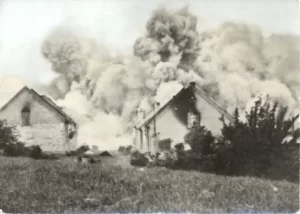
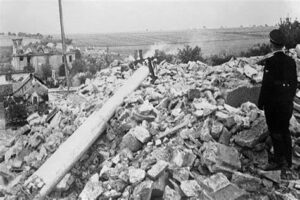 Reinhard Tristan Eugen Heydrich was a high-ranking German SS and police official during the Nazi era and a principal architect of the Holocaust. Because of the horrific things the man known as “Heydrich the Hangman” had done, the Czechoslovakian government-in-exile had decided they needed to get rid of him. The assassination didn’t go quite as planned when the assassin’s gun jammed, but a bomb thrown succeeded, albeit after a few days, caused Heydrich to contract sepsis, which ultimately lead to his death on June 4, 1942.
Reinhard Tristan Eugen Heydrich was a high-ranking German SS and police official during the Nazi era and a principal architect of the Holocaust. Because of the horrific things the man known as “Heydrich the Hangman” had done, the Czechoslovakian government-in-exile had decided they needed to get rid of him. The assassination didn’t go quite as planned when the assassin’s gun jammed, but a bomb thrown succeeded, albeit after a few days, caused Heydrich to contract sepsis, which ultimately lead to his death on June 4, 1942.
There was no evidence that the people of the village of Lidice, Czechoslovakia had anything to do with his death, but that didn’t matter to Hitler. On June 10, 1942, Hitler sent his troops to obliterate the village of Lidice, Czechoslovakia. They had apparently been chosen as the example to all others that killing Hitler’s men was not going to be tolerated. The troops went in and killed all the adult males and deported most of the surviving women and children to concentration camps. The retaliation against these innocent people for something they had no control over, was brutal!! The massacre was carried out just a day after the Nazis rounded up the residents of Lidice, which is located near Prague. During the raid, SS troops herded all the town’s male residents aged 16 years and older…a total of more than 170…to a local farm and gunned them all down. The Germans then shot seven women who tried to run, and deported the remaining women to Ravensbrück concentration camp, which was a women’s slave labor camp. At Ravensbrück about 50 prisoners died, and three were recorded as “disappeared.” Of some 105 children in the village, one was reported shot while trying to run away, and approximately 80 were reported murdered in Chelmno Killing Center, and a handful were reported murdered in German Lebensborn orphanages. A few of the orphans, who were deemed “racially pure” by Nazi standards, were dispersed throughout German territory to be renamed and raised as Germans. After the massacre, SS agents burned Lidice, blew up what was left with dynamite, and leveled the debris. The destruction was to be complete at all costs.
On child, Marie Supikova, a Lidice survivor, was just 9 during the massacre. She tells of the horrible train ride to Poland after her father was executed and her mother was sent to Ravensbrück. “We cried and cried because we were very scared, upset and confused,” Supikova told BBC in a 2012 interview. Because she looked “racially 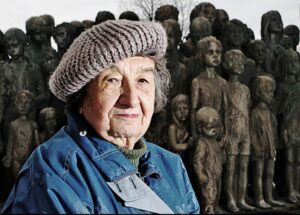
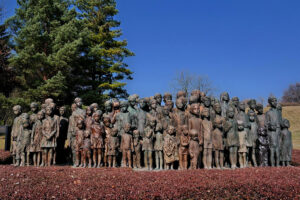 pure” she was spared. She was sent to a German family living in Poland and had her name changed to Ingeborg Schiller. “We all had blonde hair and blue eyes. We looked like the type that they could German-ize easily and raise as a good German girl or boy,” she said. Today, the Lidice Memorial honors the memory of the victims killed in the totally senseless annihilation of the village of Lidice.
pure” she was spared. She was sent to a German family living in Poland and had her name changed to Ingeborg Schiller. “We all had blonde hair and blue eyes. We looked like the type that they could German-ize easily and raise as a good German girl or boy,” she said. Today, the Lidice Memorial honors the memory of the victims killed in the totally senseless annihilation of the village of Lidice.
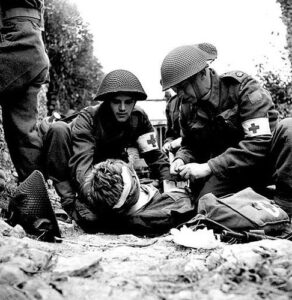
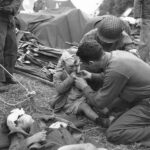 Not every soldier that stormed the beaches at Normandy, France on D-Day (June 6, 1944), carried a gun…or any other weapon. I’m not saying these men were more brave that their armed counterparts, because all of those men were targets. They all knew, going in that it was very unlikely that they would come home again. They were running onto an armed beach in broad daylight, with the plan of taking down the strongholds that existed there. The main difference between the armed soldiers and the medics was the inability to protect themselves. The medics weren’t there to fight. They were there to save. The were the only thing standing between the armed soldiers and certain death. Just the thought of that brings tears to my eyes. All the men who stormed those beaches faced almost certain death, and yet they knew they had to go. They couldn’t live with themselves if they didn’t do their best, be it killing the enemy soldiers or saving the wounded soldiers.
Not every soldier that stormed the beaches at Normandy, France on D-Day (June 6, 1944), carried a gun…or any other weapon. I’m not saying these men were more brave that their armed counterparts, because all of those men were targets. They all knew, going in that it was very unlikely that they would come home again. They were running onto an armed beach in broad daylight, with the plan of taking down the strongholds that existed there. The main difference between the armed soldiers and the medics was the inability to protect themselves. The medics weren’t there to fight. They were there to save. The were the only thing standing between the armed soldiers and certain death. Just the thought of that brings tears to my eyes. All the men who stormed those beaches faced almost certain death, and yet they knew they had to go. They couldn’t live with themselves if they didn’t do their best, be it killing the enemy soldiers or saving the wounded soldiers.
Most soldiers are trained to shoot, fight, and kill the enemy, but a combat medic is very different. He is trained to do the exact opposite. The medics had no guns. They went in to “battle” unarmed, and their mission wasn’t to attack the enemy, it was to dodge the bullets that were flying everywhere and get to the soldiers who had been wounded. Then they tried to get them off the battlefield so they could treat their wounds, and hopefully save their lives. Sometimes, they had to treat them where they were. Bullets don’t distinguish between a soldier and a medic.
There are, of course, far too many medics who have bravely gone in to try to save other soldiers at the risk of losing their own lives. While the armed soldiers fight the battles, medics pick up the pieces during and after the battle. It’s the medics who gather up the belongings of those they cannot save, so they can be returned to the families. They don’t really have much time before they must move on to the next wounded soldier, and so often they grab the dog tags, because it is the only true way to know who this soldier was. It’s the only way to let their family know that their brave soldier gave the ultimate sacrifice in battle.
My dad, Staff Sergeant Allen Spencer was a top turret gunner and flight engineer in one of the B-17s that 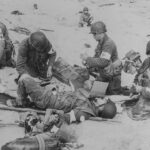
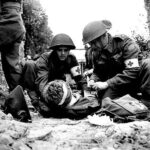 provided cover for the men as they stormed the beaches of Normandy that fateful day. My uncle, Jim Wolfe was one of the men below, storming the beaches. I don’t know if they knew each other then, but they would later, when my Uncle Jim married my dad’s sister, Ruth. It’s very hard to think about this battle, because so many lives were lost. I don’t know how anyone made it onto that beach without getting pelted with a barrage of bullets, but I am thankful for the medics who were there to try to pick up the pieces. Today marks the 80th anniversary of D-Day. From a grateful nation, we honor all who fought in that horrific battle. Very brave men all!!
provided cover for the men as they stormed the beaches of Normandy that fateful day. My uncle, Jim Wolfe was one of the men below, storming the beaches. I don’t know if they knew each other then, but they would later, when my Uncle Jim married my dad’s sister, Ruth. It’s very hard to think about this battle, because so many lives were lost. I don’t know how anyone made it onto that beach without getting pelted with a barrage of bullets, but I am thankful for the medics who were there to try to pick up the pieces. Today marks the 80th anniversary of D-Day. From a grateful nation, we honor all who fought in that horrific battle. Very brave men all!!
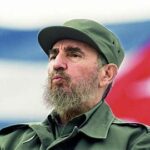 Fidel Castro was a thorn in the side of the United States and many other countries for many years. The CIA has long been rumored to have planned a series of assassination attempts against Castro using elaborate means, from using exploding cigars to poisoned pills to putting thallium salt in his shoes. Castro’s inner circle estimate that there were some 634 attempts to take his life including, giving Castro poisoned cigars, gifting him with a scuba suit lined with a skin-eating fungus, and stabbing him with a poisoned needle hidden inside a pen. There were also a number of plots to humiliate him as well, including the plot to spray Castro’s broadcasting studio with an LSD-like substance so he’d trip and fall while giving one of his
Fidel Castro was a thorn in the side of the United States and many other countries for many years. The CIA has long been rumored to have planned a series of assassination attempts against Castro using elaborate means, from using exploding cigars to poisoned pills to putting thallium salt in his shoes. Castro’s inner circle estimate that there were some 634 attempts to take his life including, giving Castro poisoned cigars, gifting him with a scuba suit lined with a skin-eating fungus, and stabbing him with a poisoned needle hidden inside a pen. There were also a number of plots to humiliate him as well, including the plot to spray Castro’s broadcasting studio with an LSD-like substance so he’d trip and fall while giving one of his 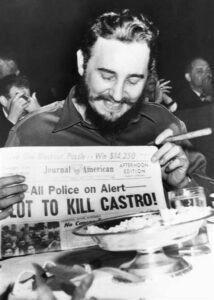 speeches and (hopefully) sound very silly too. And they wanted to dust his shoes with a substance that would make his beard fall out. Those didn’t happen either.
speeches and (hopefully) sound very silly too. And they wanted to dust his shoes with a substance that would make his beard fall out. Those didn’t happen either.
But the document officially reveals some of the schemes focused on Castro’s love of skin diving, hoping that he would pick up the beach shell and trigger an explosive, and another that considered giving the revolutionary a contaminated diving suit. That of course leaves a lot to chance and makes the beach unsafe for anyone else there, or that the wrong person might pick up the seashell. These ideas for assassination attempts, whether real or rumored, were wild and often crazy, but at the very least, they show just how frustrating a man Fidel Castro was. When people  consider booby trapping a seashell, you know they are grasping at straws. Still, such an attempt wouldn’t work on just any “mark” because not every mark would possibly pick up a seashell.
consider booby trapping a seashell, you know they are grasping at straws. Still, such an attempt wouldn’t work on just any “mark” because not every mark would possibly pick up a seashell.
In each of these attempts or imaginary attempts, Fidel Castro walked away unscathed. It wasn’t that attempts weren’t made it was just that Fidel Castro wasn’t killed in the attempts. I don’t know how he escaped, and many people wish he had not. His reign of terror was far too long and far too horrific. In the end, Castro, who overthrew US-backed Cuban leader Fulgencio Batista in 1959, died of natural causes on November 25, 2016, at age 90, leaving power to his brother Raul.
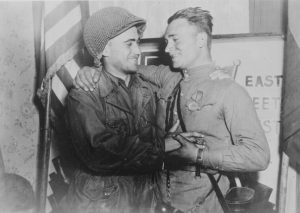 Sometimes, an event that potentially changed history, ends up getting little or no recognition. Thankfully, the picture that marked the event was taken, or the entire event might never have been noticed in history at all. This particular day is actually a very important day in the history of World War II, and therefore, the world. Elbe Day, which took place on April 25, 1945, is the day Soviet and American troops met at the Elbe River, near Torgau in Germany. This event marked an important step toward the end of World War II in Europe. If you have ever heard the saying, divide and conquer, you will know basically what happened on Elbe Day. A secret mission had been planned, and April 25, 1945, was the day it was carried out.
Sometimes, an event that potentially changed history, ends up getting little or no recognition. Thankfully, the picture that marked the event was taken, or the entire event might never have been noticed in history at all. This particular day is actually a very important day in the history of World War II, and therefore, the world. Elbe Day, which took place on April 25, 1945, is the day Soviet and American troops met at the Elbe River, near Torgau in Germany. This event marked an important step toward the end of World War II in Europe. If you have ever heard the saying, divide and conquer, you will know basically what happened on Elbe Day. A secret mission had been planned, and April 25, 1945, was the day it was carried out.
The plan was to have the Soviet army advance from the East, and the US Army advance from the West. The first contact between American and Soviet patrols occurred near Strehla exactly as planned, after First Lieutenant Albert Kotzebue, an American soldier, crossed the Elbe River in a boat with three men of an intelligence and reconnaissance platoon. Once they crossed to the east bank of the river, they met up with 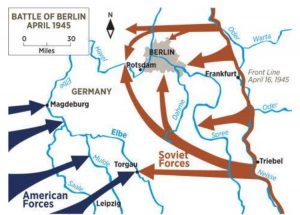 forward elements of a Soviet Guards rifle regiment of the First Ukrainian Front, under the command of Lieutenant Colonel Alexander Gardiev. Later that day, another patrol under Second Lieutenant William Robertson with Frank Huff, James McDonnell and Paul Staub met a Soviet patrol commanded by Lieutenant Alexander Silvashko on the destroyed Elbe bridge of Torgau. When the two armies connected at the Elbe River, the cutting of Germany in half is accomplished. In doing so, the strength of the German army was severely weakened. The German army was split in two, just like the country was, and in the end, that split made it impossible for the Germans to really fight the war they were engaged in. It was the beginning of the end for them.
forward elements of a Soviet Guards rifle regiment of the First Ukrainian Front, under the command of Lieutenant Colonel Alexander Gardiev. Later that day, another patrol under Second Lieutenant William Robertson with Frank Huff, James McDonnell and Paul Staub met a Soviet patrol commanded by Lieutenant Alexander Silvashko on the destroyed Elbe bridge of Torgau. When the two armies connected at the Elbe River, the cutting of Germany in half is accomplished. In doing so, the strength of the German army was severely weakened. The German army was split in two, just like the country was, and in the end, that split made it impossible for the Germans to really fight the war they were engaged in. It was the beginning of the end for them.
Finally, on April 26, the commanders of the 69th Infantry Division of the First Army (United States) and the 58th Guards Rifle Division of the 5th Guards Army (Soviet Union) met at Torgau, southwest of Berlin. They knew that this moment was monumental, and it had to be documented. Arrangements were made for the 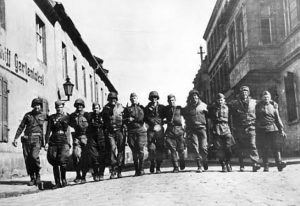 formal “Handshake of Torgau” photo to be taken of Robertson and Silvashko the following day, April 27. The Soviet, American, and British governments released simultaneous statements that evening in London, Moscow, and Washington, “reaffirming the determination of the three Allied powers to complete the destruction of the Third Reich.” They knew they must have victory at all costs.
formal “Handshake of Torgau” photo to be taken of Robertson and Silvashko the following day, April 27. The Soviet, American, and British governments released simultaneous statements that evening in London, Moscow, and Washington, “reaffirming the determination of the three Allied powers to complete the destruction of the Third Reich.” They knew they must have victory at all costs.
The fact that Elbe Day has never been an official holiday in any country, has not stopped people from looking to the day as something very special, and in the years after 1945 the memory of this friendly encounter gained new significance in the context of the Cold War between the United States and the Soviet Union.
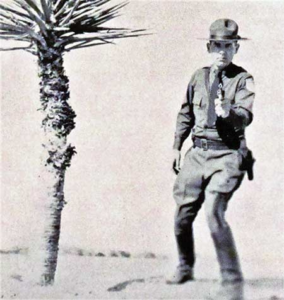 Charles Askins, Jr was an American lawman, US Army officer, and writer. He served in law enforcement, mostly with the US Forest Service and Border Patrol, in the American Southwest prior to the Second World War. He was also known as Colonel Charles “Boots” Askins. He was the son of Major Charles “Bobo” Askins, a sportswriter and Army officer who served in the Spanish American War and World War I, and he was quickly following in his father’s footsteps.
Charles Askins, Jr was an American lawman, US Army officer, and writer. He served in law enforcement, mostly with the US Forest Service and Border Patrol, in the American Southwest prior to the Second World War. He was also known as Colonel Charles “Boots” Askins. He was the son of Major Charles “Bobo” Askins, a sportswriter and Army officer who served in the Spanish American War and World War I, and he was quickly following in his father’s footsteps.
Askins was born in Nebraska on October 28, 1987. The family moved to Oklahoma, where “Boots” Askins was raised. He had several careers in his life, but the first job was fighting forest fires in Montana. Then in 1927, the US Forest Service transferred him to New Mexico to be a Park Ranger at the Kit Carson National Forest. Askins fought fires in New Mexico, until 1930, when he was recruited by the US Border Patrol. Askins wrote in his memoir Unrepentant Sinner, that he had been involved in at least one gunfight every week. I’m sure that work on the US border brought with it a common risk of gunfights. Askins showed great skill, and during his service in the Border Patrol, he won many pistol championships. He was promoted to leader of the Border Patrol’s handgun skills program.
When the United States entered World War II, Askins served in the US Army as a battlefield recovery officer. 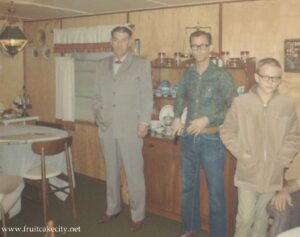 His work took him to North Africa, Italy, and he was in France on D-day. After being discharged from the Army following World War II, he spent several years in Spain as an attaché to the American embassy, helping Franco rebuild Spain’s munition plants. When he completed his assignment in Spain, he was reassigned to Vietnam, where he trained South Vietnamese soldiers in shooting and airborne operations. Askins had an exemplary career in the Army and while he was in the military, he indulged in big game hunting at every opportunity. He continued hunting after his retirement. In his lifetime, he held several big game hunting records, as well as two national pistol championships, an American Handgunner of the Year award, and innumerable smaller titles in competitive shooting. Askins spent his final years in the military at Fort Sam Houston, and he retired to San Antonio, Texas.
His work took him to North Africa, Italy, and he was in France on D-day. After being discharged from the Army following World War II, he spent several years in Spain as an attaché to the American embassy, helping Franco rebuild Spain’s munition plants. When he completed his assignment in Spain, he was reassigned to Vietnam, where he trained South Vietnamese soldiers in shooting and airborne operations. Askins had an exemplary career in the Army and while he was in the military, he indulged in big game hunting at every opportunity. He continued hunting after his retirement. In his lifetime, he held several big game hunting records, as well as two national pistol championships, an American Handgunner of the Year award, and innumerable smaller titles in competitive shooting. Askins spent his final years in the military at Fort Sam Houston, and he retired to San Antonio, Texas.
Askins inherited his writing skills from his father, “Bobo” Askins. “Boots” Askins was a creative writer, with a 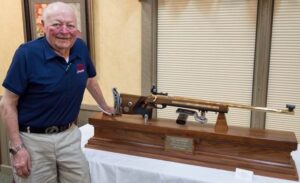 number of books and over 1,000 magazine articles on subjects related to hunting and shooting. His writing career spanned 70 years, from 1929 until his death in March of 1999. While he was an excellent, his writings were considered controversial, mostly because he liked to graphically describe the numerous fatal shootings in his law enforcement and military careers, stating he had killed “27, not counting blacks and Mexicans.” He even once described himself as possibly a “psychopathic killer, and that he hunted animals so avidly because he was not allowed to hunt men anymore.” I suppose his killings were “justified” but maybe not really ethical. Still, many of them were necessary. He died on March 2, 1999, at the age of 91.
number of books and over 1,000 magazine articles on subjects related to hunting and shooting. His writing career spanned 70 years, from 1929 until his death in March of 1999. While he was an excellent, his writings were considered controversial, mostly because he liked to graphically describe the numerous fatal shootings in his law enforcement and military careers, stating he had killed “27, not counting blacks and Mexicans.” He even once described himself as possibly a “psychopathic killer, and that he hunted animals so avidly because he was not allowed to hunt men anymore.” I suppose his killings were “justified” but maybe not really ethical. Still, many of them were necessary. He died on March 2, 1999, at the age of 91.

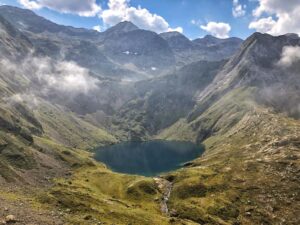 During World War II, Hitler was terrorizing people, especially the Jews, Gypsies, and even Blacks. Hitler wanted to create an Aryan race dominate society, and truly preferred that anyone who did not fit that “mold” be removed from the Earth. The Aryan race consisted of tall, blonde-haired blue-eyed people, which is odd, considering the fact that Hitler was short (5’9″), and had brown hair. He did have blue eyes, but that was about the only part of him that fit the “mold” of the Aryan race. Nevertheless, he terrorized many people and for that reason, many people tried to escape the occupied areas of Europe, like France to the free areas like Spain.
During World War II, Hitler was terrorizing people, especially the Jews, Gypsies, and even Blacks. Hitler wanted to create an Aryan race dominate society, and truly preferred that anyone who did not fit that “mold” be removed from the Earth. The Aryan race consisted of tall, blonde-haired blue-eyed people, which is odd, considering the fact that Hitler was short (5’9″), and had brown hair. He did have blue eyes, but that was about the only part of him that fit the “mold” of the Aryan race. Nevertheless, he terrorized many people and for that reason, many people tried to escape the occupied areas of Europe, like France to the free areas like Spain.
One of the routes was to go across the ridge of the Pyrenees Mountain range, in order to cross the border into  the “promised land,” the neutral territory of Spain, to find a way of escape, a second chance, a future. It was a perilous route to go through the Pyrenees mountains, but it provided a means for hundreds of thousands of resistance fighters, civilians, Jews, allied soldiers and escaped prisoners of war to evade Nazi pursuers. Failure was not an option, because behind them was Nazi-occupied France, bringing certain imprisonment or death. Many of the travelers had come quite a distance, helped by resistance fighters and citizens who disagreed with all that was going on with the Nazi regime. The perilous journey up through rocky boulder fields and frozen glaciers was the final stretch in a long and dangerous trek across wartime Europe, hiding from German military, Gestapo secret police and SS paramilitary forces.
the “promised land,” the neutral territory of Spain, to find a way of escape, a second chance, a future. It was a perilous route to go through the Pyrenees mountains, but it provided a means for hundreds of thousands of resistance fighters, civilians, Jews, allied soldiers and escaped prisoners of war to evade Nazi pursuers. Failure was not an option, because behind them was Nazi-occupied France, bringing certain imprisonment or death. Many of the travelers had come quite a distance, helped by resistance fighters and citizens who disagreed with all that was going on with the Nazi regime. The perilous journey up through rocky boulder fields and frozen glaciers was the final stretch in a long and dangerous trek across wartime Europe, hiding from German military, Gestapo secret police and SS paramilitary forces.
The Freedom Trail, whose final ascent has a zig-zag path through an ice sheet, is an annual “walking memorial” 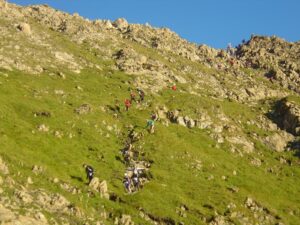
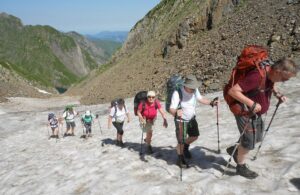 these days. People, some of them descendants of the original people who walked the trail in a desperate run for their lives, walk to remember those who went before them to freedom, those who could not make the journey and lost their lives, and those who lost their lives on the trail itself. The area really is quite beautiful, but I’m sure it didn’t feel that way to those who were running for their lives.
these days. People, some of them descendants of the original people who walked the trail in a desperate run for their lives, walk to remember those who went before them to freedom, those who could not make the journey and lost their lives, and those who lost their lives on the trail itself. The area really is quite beautiful, but I’m sure it didn’t feel that way to those who were running for their lives.
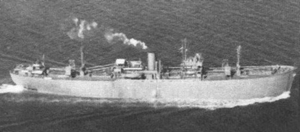
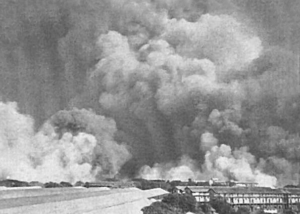 When a ship explodes in a port, the first assumption is that terrorists attacked, but that is not always the case. On April 14, 1944, cargo ship Fort Stikine exploded in a berth in the docks of Bombay, India, which is now known as Mumbai. The catastrophic explosion killed 1,300 people and injured another 3,000. It’s possible that the reason it was considered terrorists, or in this case, Japanese sabotage, was because the incident happened during World War II. Nevertheless, the explosion was actually caused by a tragic accident.
When a ship explodes in a port, the first assumption is that terrorists attacked, but that is not always the case. On April 14, 1944, cargo ship Fort Stikine exploded in a berth in the docks of Bombay, India, which is now known as Mumbai. The catastrophic explosion killed 1,300 people and injured another 3,000. It’s possible that the reason it was considered terrorists, or in this case, Japanese sabotage, was because the incident happened during World War II. Nevertheless, the explosion was actually caused by a tragic accident.
The ship, The Fort Stikine was a Canadian-built steamship weighing 8,000 tons. On February 24, Fort Stikine left Birkenhead, England, making a stop in Karachi, Pakistan, before continuing on to dock at Bombay. The cargo on Fort Stikine that day included hundreds of cotton bales, gold bullion and, most notably, 300 tons of trinitrotoluene, better known as TNT or dynamite. I’m sure you can begin to get a picture of what might have triggered this tragic accident. Despite the well-known fact that cotton bales were prone to combustion, the 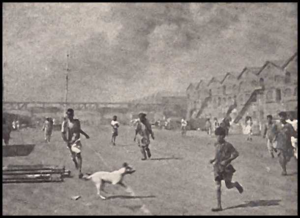 cotton was stored one level below the dynamite. I’m sure that with a little imagination, you can probably guess what happened next.
cotton was stored one level below the dynamite. I’m sure that with a little imagination, you can probably guess what happened next.
While the ship was being loaded with her cargo, someone noticed smoke coming from the cotton bales. Firefighters were sent to investigate, but emergency measures, such as flooding that part of the ship, were not immediately taken. Instead, about 60 firefighters tried to put out the fire with hoses throughout the afternoon. For some reason, the TNT was not unloaded during the firefighting efforts, creating a recipe for disaster. Before long, it became clear that the firefighters were not going to be able to get control of the fire, and they were ordered off the ship, but they kept dousing the fire from the docks. Unfortunately, their efforts were in vain. The TNT ignited, and at 4:07pm, and the resulting explosion rocked the bay area. The initial force of the blast actually lifted a nearby 4,000-ton ship from the bay onto the land. Windows shattered up to a mile away. A 28-pound gold bar from the Fort Stikine, worth many thousands of dollars, was found a mile away. Everyone in close vicinity of the ship was killed.
In addition to the Fort Stikine, twelve other ships at the docks were destroyed and many more were seriously damaged. The initial blast threw burning debris all over the port. Fires broke out, causing further explosions. In 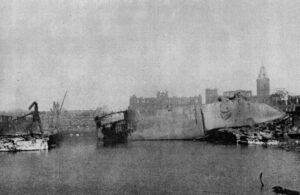
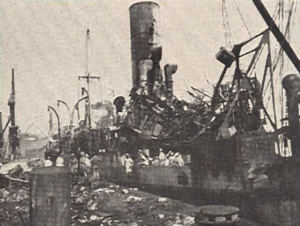 desperation, military troops were brought in to fight the raging fires and some buildings were demolished just to stop it from spreading. For three days after the explosion, the main business center of Bombay was not safe for anyone to be in. A valuable lesson was learned, but at a horrible price. So many lives lost to learn that cotton and TNT should probably never be on the same ship, but if they are, the cotton should never be stored right below the TNT.
desperation, military troops were brought in to fight the raging fires and some buildings were demolished just to stop it from spreading. For three days after the explosion, the main business center of Bombay was not safe for anyone to be in. A valuable lesson was learned, but at a horrible price. So many lives lost to learn that cotton and TNT should probably never be on the same ship, but if they are, the cotton should never be stored right below the TNT.
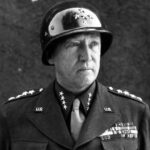
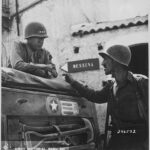 In any job, there can be personality conflicts, and Lieutenant General George S Patton was not liked by every other officer he served with. Nevertheless, like him or not, Lieutenant General George S Patton’s 3rd Army was successful is battle. On March 22, 1945, soldiers of the United States’ Third Army, under the command of Lieutenant General George S Patton, crossed the Rhine River at Oppenheim, south of Mainz. Patton’s arrival was weeks ahead of his rival, British Field Marshal Bernard Law Montgomery. When Patton went to battle, he was known to fight his own higher command structure nearly as hard as he did the Germans. His comments were often harsh and probably ruffled some feathers, but he was known to get the job done. He was also known for moving farther and more aggressively than ordered, and even having his troops pose as First Army soldiers in order to steal fuel from that unit’s stores in order to maintain their own advance to the east. By March 29, Patton had captured Frankfurt. Then Patton, commonly called “Old Blood and Guts” continued his march east.
In any job, there can be personality conflicts, and Lieutenant General George S Patton was not liked by every other officer he served with. Nevertheless, like him or not, Lieutenant General George S Patton’s 3rd Army was successful is battle. On March 22, 1945, soldiers of the United States’ Third Army, under the command of Lieutenant General George S Patton, crossed the Rhine River at Oppenheim, south of Mainz. Patton’s arrival was weeks ahead of his rival, British Field Marshal Bernard Law Montgomery. When Patton went to battle, he was known to fight his own higher command structure nearly as hard as he did the Germans. His comments were often harsh and probably ruffled some feathers, but he was known to get the job done. He was also known for moving farther and more aggressively than ordered, and even having his troops pose as First Army soldiers in order to steal fuel from that unit’s stores in order to maintain their own advance to the east. By March 29, Patton had captured Frankfurt. Then Patton, commonly called “Old Blood and Guts” continued his march east.
Frankfurt am Main, which means “On the Main” River, in western Germany, was the mid-19th century capital of Germany, until it was annexed by Prussia in 1866, in a move that ended its status as a free city, and thereby ending its reign as capital. When Germany was integrated into a united German nation, Frankfurt developed into a significant industrial city, making it a prime target for Allied bombing during the war. Bombing began in July of 1941, during a series of British air raids against the Nazis. By March of 1944, Frankfurt suffered major damage during a raid in which 27,000 tons of bombs were dropped on the nation in a single month. As a result, Frankfurt’s medieval Old Town was virtually destroyed.
Like him or not, Patton was a capable warrior. During the Battle of the Bulge, in December of 1944, General Patton broke through the German lines of the besieged Belgian city of Bastogne. The brave defenders of that city were so thankful for the assistance. Patton continued to push the Germans to the east, heading for his goal…to cross the Rhine. He was so determined that he didn’t care if he had to take down every single bridge along the route, in order to achieve his objective. Upon his arrival, Patton found one bridge…the Ludendorff Bridge, located in the little town of Remagen had not been destroyed. The American troops had already made a crossing on March 7, 1945, in a single great moment in the war and in history. Historically, no enemy army had crossed the Rhine since Napoleon accomplished the feat in 1805. Now there were two. The March 7th crossing and Patton’s grand crossing on March 22nd, and from the bridgehead created there, “Old Blood and Guts” and h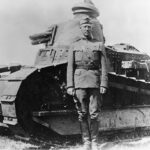
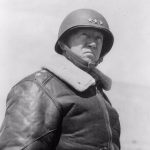 is 3rd Army headed east and captured Frankfurt on March 29, 1945.
is 3rd Army headed east and captured Frankfurt on March 29, 1945.
Still, Patton didn’t stop there. He crossed through southern Germany and into Czechoslovakia, at which point, he was given an order not to take Prague, the capital. It was to be saved for the Soviets to take. After all that, you might expect Patton to be furious, but uncharacteristically, he was not. Nevertheless, Patton desperately wanted to liberate Prague, probably for political, as well as personal reasons. Patton was a great warrior, but he was not above wanting the headlines.
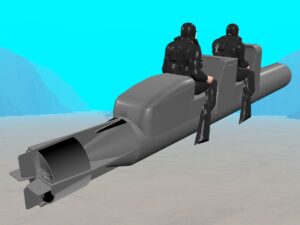 I am always amazed at some of the “latest and greatest” kinds of weapons that men have come up with to wreak havoc on their enemies. Of course, in a war, it is kill or be killed, so when you go into battle, you need the best weapons available. Still, some weapons are so strange that it is hard to imagine how they can work and how anyone would be willing to use them. Nevertheless, they do. On March 25, 1941, Italy attacked the British Fleet at Souda Bay, Crete. The strange part about this warhead (a torpedo) was that this was a “manned” torpedo. You might ask yourself how that could possibly be and how it could possibly work. We know what torpedoes are, but how can they possibly be manned? Nevertheless, they were.
I am always amazed at some of the “latest and greatest” kinds of weapons that men have come up with to wreak havoc on their enemies. Of course, in a war, it is kill or be killed, so when you go into battle, you need the best weapons available. Still, some weapons are so strange that it is hard to imagine how they can work and how anyone would be willing to use them. Nevertheless, they do. On March 25, 1941, Italy attacked the British Fleet at Souda Bay, Crete. The strange part about this warhead (a torpedo) was that this was a “manned” torpedo. You might ask yourself how that could possibly be and how it could possibly work. We know what torpedoes are, but how can they possibly be manned? Nevertheless, they were.
The attack of March 25, 1941, was the first time that manned torpedoes had been employed in naval warfare, and while it was strange, it added a new weapon to the world’s navies’ arsenals. Known as the “Chariot,” the weapon was definitely unique. It was mainly used to attack enemy ships that were still in the harbors. That makes sense, because the type of preparation necessary to run it would not be feasible in most settings. The Chariots needed “pilots” to “drive” them to their targets. Now, imagine having that be your job. We all know 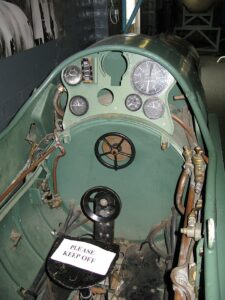 what torpedoes do, they are deployed and run straight to their target and explode on contact. So, what does a “manned” torpedo do? The same thing!! Technically, however, this is not a suicide mission for the pilot. The way it works is this. The pilot sits astride the torpedo on a vehicle that would transport them both to their target. The pilot would guide the missile as close to the target as possible, then he detached the vehicle and rode it back, usually to a submarine. The only major problem my mind can envision would be if the vehicle wouldn’t detach. The Chariot was an enormous tactical advantage, because before its development, the closest weapon to the Chariot was the Japanese Kaiten, which was a human torpedo, or suicide bomb, which had obvious drawbacks. Imagine being the “pilot” of that kind of torpedo. Obviously, it something malfunctioned, the “pilot” could end up dead, but with the Kaiten, something was going to go very wrong by definition.
what torpedoes do, they are deployed and run straight to their target and explode on contact. So, what does a “manned” torpedo do? The same thing!! Technically, however, this is not a suicide mission for the pilot. The way it works is this. The pilot sits astride the torpedo on a vehicle that would transport them both to their target. The pilot would guide the missile as close to the target as possible, then he detached the vehicle and rode it back, usually to a submarine. The only major problem my mind can envision would be if the vehicle wouldn’t detach. The Chariot was an enormous tactical advantage, because before its development, the closest weapon to the Chariot was the Japanese Kaiten, which was a human torpedo, or suicide bomb, which had obvious drawbacks. Imagine being the “pilot” of that kind of torpedo. Obviously, it something malfunctioned, the “pilot” could end up dead, but with the Kaiten, something was going to go very wrong by definition.
The first successful use of the Chariot was by the Italian navy was on March 26, when six Italian motorboats, commanded by Italian naval commander Lieutenant Luigi Faggioni, entered Souda Bay in Crete and planted their weapons along a British convoy in harbor there. The Italians referred to their version as Maiali, or “Pigs.” In the attack, the cruiser York was so severely damaged by the blast that it had to be beached. The manned torpedoes had proven to be the most effective weapon in the Italian naval arsenal. In December 1941, the Italian torpedoes were successfully used against the British at Alexandria, Egypt. Malian torpedoes also sank the British battleships Queen Elizabeth and Valiant, as well as one tanker. They were used against merchant ships at Gibraltar and elsewhere.
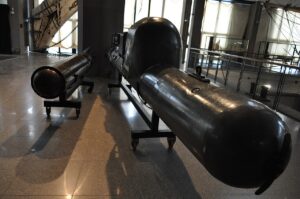
The British did get even with the Italians by sinking the new Italian cruiser Ulpio Traiano in the port of Palermo, Sicily, in early January 1943. An 8,500-ton ocean liner was also damaged in the same attack. After the Italian surrender, Britain, and later Germany, continued to use the manned torpedo. It is such a strange weapon, and I can’t imagine how the “pilots” felt about the risks involved with it. Nevertheless, it was successful. Germany succeeded in sinking two British minesweepers off Normandy Beach in July 1944, using their Neger torpedoes, which was basically the same thing.
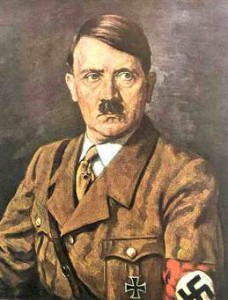
 Adolf Hitler was quite possibly one of the most insane people of all time, but apparently much of the hateful things he did were actually done under the influence of Opioids and Meth. Does that excuse his behavior? Absolutely not. Even on opioids and meth, there was a monster that existed deep on the inside of that man. There was a deep-seated hatred that made him do the things he did. The opioids and meth merely gave him the ability to continue on in his hatred, and it wasn’t just Hitler that was regularly using these drugs to carry out their hateful tasks. It is common knowledge that many of the soldiers under Hitler either didn’t know the truth of everything that was going on, and still others were afraid to argue the point for fear of their own death. For many of those people, the use of drugs was the only escape from the horrors of what they had to do.
Adolf Hitler was quite possibly one of the most insane people of all time, but apparently much of the hateful things he did were actually done under the influence of Opioids and Meth. Does that excuse his behavior? Absolutely not. Even on opioids and meth, there was a monster that existed deep on the inside of that man. There was a deep-seated hatred that made him do the things he did. The opioids and meth merely gave him the ability to continue on in his hatred, and it wasn’t just Hitler that was regularly using these drugs to carry out their hateful tasks. It is common knowledge that many of the soldiers under Hitler either didn’t know the truth of everything that was going on, and still others were afraid to argue the point for fear of their own death. For many of those people, the use of drugs was the only escape from the horrors of what they had to do.
Still, there were many people who were truly evil, and it’s quite likely that those people simply used the drugs to “enhance” the horrific experience, and by enhance, I mean they very much enjoyed the killing and in their twisted minds, the use of the drugs made it more “pleasurable” to do the things they did. The drugs also kept the Nazis awake for many more hours than they might otherwise have been able to endure. The Nazi call was “Germany awake!” The orders were constantly barked out, and they meant it more than most people even knew. As Nazi Germany battled its way through World War II, the country relied on a little secret to stay “energetic.” It was known as Pervitin. It was used by the soldiers to avoid sleep and to numb the terror of battle. Housewives later popped Pervitin so they could “finish all their chores and lose weight” too. It turns out, however, that it was just pure methamphetamine. And Adolf Hitler himself relied on even stronger remedies, taking a drug called Eukodal, effectively a cocktail of oxycodone and cocaine, to treat various “ailments.”
By 1941, a top German health minister wrote a letter fretting that the entire nation was “becoming addicted to drugs” but it made little difference to Hitler or anyone else. Indeed, there remains a “trove of weird historical facts about drug use in Nazi Germany” that would totally astound even World War II buffs. We already knew that Hitler was evil and crazy, but now we know more about how he was able to keep going with all his hate. 
 For some or most of the soldiers, it was likely a way to control what they did. I’m sure a ‘mutiny” would have been catastrophic for Hitler’s master plan against the Jews. When some of those soldiers saw the atrocities that occurred, they actually wept. Many of them had no idea what was really going on…and I’m sure that was exactly what Hitler wanted.
For some or most of the soldiers, it was likely a way to control what they did. I’m sure a ‘mutiny” would have been catastrophic for Hitler’s master plan against the Jews. When some of those soldiers saw the atrocities that occurred, they actually wept. Many of them had no idea what was really going on…and I’m sure that was exactly what Hitler wanted.

